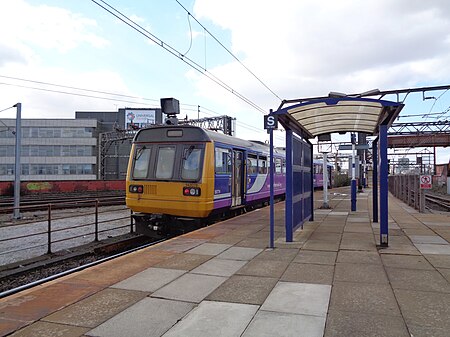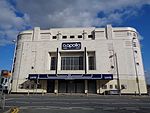Ardwick railway station
1842 establishments in EnglandFormer Great Central Railway stationsNorthern franchise railway stationsPages with no open date in Infobox stationRailway stations in Great Britain opened in 1842 ... and 2 more
Railway stations in ManchesterUse British English from November 2010

Ardwick railway station in Ardwick, Manchester, England, is about one mile (1.5 km) south-east of Manchester Piccadilly, in an industrial area of east Manchester. Plans to close the station permanently were scrapped in 2006 due to increasing activity in the area. The station has just one train in each direction calling on Monday to Friday in the winter 2019–20 timetable. These trains have additionally called at the station on Saturdays from May 2018.
Excerpt from the Wikipedia article Ardwick railway station (License: CC BY-SA 3.0, Authors, Images).Ardwick railway station
Blind Lane, Manchester Ardwick
Geographical coordinates (GPS) Address Nearby Places Show on map
Geographical coordinates (GPS)
| Latitude | Longitude |
|---|---|
| N 53.471111111111 ° | E -2.2130555555556 ° |
Address
Ardwick
Blind Lane
M12 6LY Manchester, Ardwick
England, United Kingdom
Open on Google Maps









